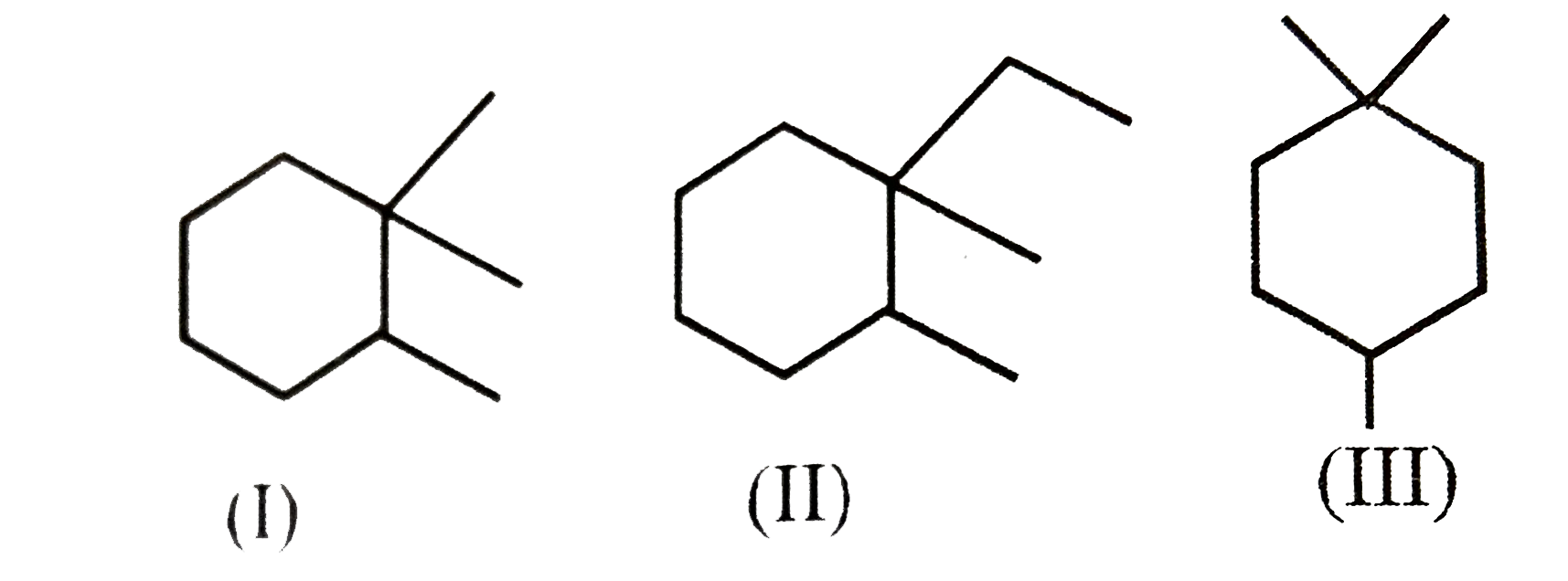The alkene that exhibits geometrical isomerism is
propene
2-methyl propene
2-butene
2-methyl-2-butene
The correct Answer is:C
To determine which alkene exhibits geometrical isomerism, we need to analyze each option based on the structural requirements for geometrical (cis-trans) isomerism. Geometrical isomerism occurs when there is a double bond between two carbon atoms, and each carbon atom of the double bond must have two different substituents.
1. Analyze Option A: Propene
- Structure: Propene (C3H6) has the structure CH2=CH-CH3.
- Check the double bond: The double bond is between the first and second carbon atoms.
- Substituents: The first carbon (C1) has two hydrogen atoms (H) and the second carbon (C2) has one hydrogen and one methyl group (CH3).
- Conclusion: Since C1 has two identical substituents (H), propene cannot exhibit geometrical isomerism.
2. Analyze Option B: 2-Methylpropene
- Structure: 2-Methylpropene (C4H8) has the structure CH2=C(CH3)-CH3.
- Check the double bond: The double bond is between the first carbon (C1) and the second carbon (C2).
- Substituents: C1 has two hydrogen atoms (H) and C2 has two methyl groups (C).
- Conclusion: Since C1 has two identical substituents (H) and C2 has two identical substituents (C), 2-methylpropene cannot exhibit geometrical isomerism.
3. Analyze Option C: 2-Butene
- Structure: 2-Butene (C4H8) has the structure CH3-CH=CH-CH3.
- Check the double bond: The double bond is between the second carbon (C2) and the third carbon (C3).
- Substituents: C2 has one methyl group (CH3) and one hydrogen (H), while C3 also has one methyl group (CH3) and one hydrogen (H).
- Conclusion: Both C2 and C3 have different substituents (H and CH3), allowing for the possibility of cis (same side) and trans (opposite side) configurations. Thus, 2-butene can exhibit geometrical isomerism.
4. Analyze Option D: 2-Methyl-2-butene
- Structure: 2-Methyl-2-butene (C5H10) has the structure CH3-C(CH3)=CH-CH3.
- Check the double bond: The double bond is between C2 and C3.
- Substituents: C2 has two methyl groups (C) and C3 has one methyl group (C) and one hydrogen (H).
- Conclusion: Since C2 has two identical substituents (C), 2-methyl-2-butene cannot exhibit geometrical isomerism.
Final Answer:
The alkene that exhibits geometrical isomerism is Option C: 2-butene.
- Structure: Propene (C3H6) has the structure CH2=CH-CH3.
- Check the double bond: The double bond is between the first and second carbon atoms.
- Substituents: The first carbon (C1) has two hydrogen atoms (H) and the second carbon (C2) has one hydrogen and one methyl group (CH3).
- Conclusion: Since C1 has two identical substituents (H), propene cannot exhibit geometrical isomerism.
- Structure: 2-Methylpropene (C4H8) has the structure CH2=C(CH3)-CH3.
- Check the double bond: The double bond is between the first carbon (C1) and the second carbon (C2).
- Substituents: C1 has two hydrogen atoms (H) and C2 has two methyl groups (C).
- Conclusion: Since C1 has two identical substituents (H) and C2 has two identical substituents (C), 2-methylpropene cannot exhibit geometrical isomerism.
- Structure: 2-Butene (C4H8) has the structure CH3-CH=CH-CH3.
- Check the double bond: The double bond is between the second carbon (C2) and the third carbon (C3).
- Substituents: C2 has one methyl group (CH3) and one hydrogen (H), while C3 also has one methyl group (CH3) and one hydrogen (H).
- Conclusion: Both C2 and C3 have different substituents (H and CH3), allowing for the possibility of cis (same side) and trans (opposite side) configurations. Thus, 2-butene can exhibit geometrical isomerism.
- Structure: 2-Methyl-2-butene (C5H10) has the structure CH3-C(CH3)=CH-CH3.
- Check the double bond: The double bond is between C2 and C3.
- Substituents: C2 has two methyl groups (C) and C3 has one methyl group (C) and one hydrogen (H).
- Conclusion: Since C2 has two identical substituents (C), 2-methyl-2-butene cannot exhibit geometrical isomerism.
The alkene that exhibits geometrical isomerism is Option C: 2-butene.
Topper's Solved these Questions
Similar Questions
Knowledge Check
Geometrical isomerism is caused
Aby restricted rotation around C=C bondBby the presence of one asymmetric carbon atomCdue to the differennt groups attached to the same functional groupDby swing of hydrogenn atom between two divalent atoms.Which of the following types of compounds is unable to exhibit geometrical isomerism ?
Aabc = CabBaxC = CayCaaC = CabDnone of these
The geometrical isomerism is shown by:
View SolutionExplain why compounds of the type aaC=Cab are unable to exhibit geometrical isomerism?
View SolutionWhich of the following can exhibit geometrical isomerism?
View SolutionA: All square planar complexes can exhibit geometrical isomerism.
R: In square planar complexes metal assumes sp3 hybridisation.
View SolutionWhich of these will exhibit geometrical isomerism ?

View SolutionWhich of these will exhibit geometrical isomerism ?

View Solution